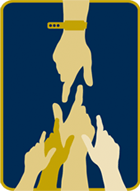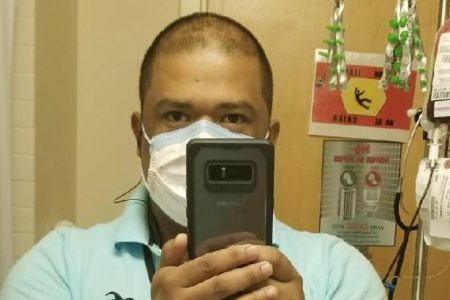Servando, a 37-year-old chef, from Tulsa, OK, has Chronic Myeloid Leukemia, or CML. His treatment has been more complicated than for most patients with this potentially fatal blood cancer. So as a last resort, he came to the NIH with the hope for a cure.
In CML, the bone marrow makes too many white blood cells. Before the discovery of targeted drug therapies, a CML diagnosis was considered a death sentence. But after NIH-supported research and the 2001 FDA approval of the first targeted drug therapy, Gleevac, most CML patients can expect to live long and healthy lives, although they can require life-long treatment.
After his diagnosis two years ago, Servando took three different drugs, including Gleevac, and failed all of them. His cancer cells were mutating faster than they could be destroyed, making them immune to the therapy that worked for others. His oncologist said Servando’s only hope for a cure was a stem cell transplant.
An allogeneic transplant (using donor stem cells) wasn’t available near his home so he enrolled in a study at the NIH Clinical Center that would focus on graft vs host disease in well-matched, but unrelated donors. He learned, to his surprise, that his donor is a 20-year-old Israeli woman.
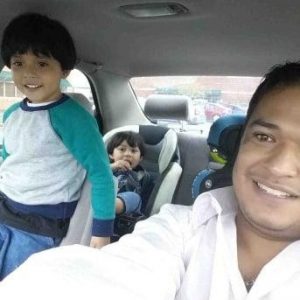
With his sons, before treatment
Servando gave up his job and apartment and sold nearly all his belongings, keeping only a few clothes and some of his sons’ treasured toys, to pay for a trip to the NIH. He packed his car and drove to Bethesda, MD. His family also raised money for him but not nearly enough to pay for an extended stay at the NIH.
Fortunately, with the generous support of donors, Friends of Patients at the NIH placed Servando in one of our apartments near the NIH campus for three months of monitoring after his stem cell transplant. His parents joined him from Mexico to help with his care. (pictured below).
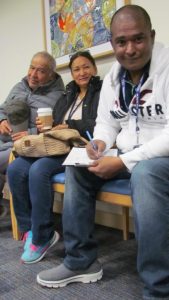
Servando and Dr. Steven Pavletic, head of the Graft-versus-host and Autoimmunity Unit of the National Cancer Institute
Servando has nothing but thanks for the help that Friends’ donors provide, saying he is especially appreciative of the apartment for its privacy, comfort and providing a place for his family to prepare healthy meals to help his recovery. “It is great support. I know bad things happen in this world, that’s a reality. But there also are a lot of good people who make a difference.”
Dr. Steven Pavletic, Servando’s physician, says the stem cell transplant is, at this point, a complete success as all of Servando’s blood cells are coming from the donor cells. “What we tell our patients is allogeneic transplantation is a process. It’s not like having surgery, and you heal and go home,” he says. “It’s transplantation of another person’s immune system and that takes time for the recipient’s body to adjust to, so there are several stages.”
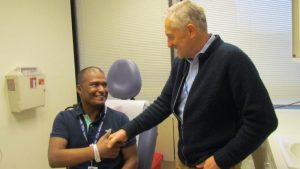 Servando is dealing with a complication of graft versus host disease, but Dr. Pavletic believes his chances are very good for keeping the CML in remission and going home soon. “It’s a team effort with the patient, the family and community care physicians…and in this context Friends at NIH helped save his life.”
Servando is dealing with a complication of graft versus host disease, but Dr. Pavletic believes his chances are very good for keeping the CML in remission and going home soon. “It’s a team effort with the patient, the family and community care physicians…and in this context Friends at NIH helped save his life.”
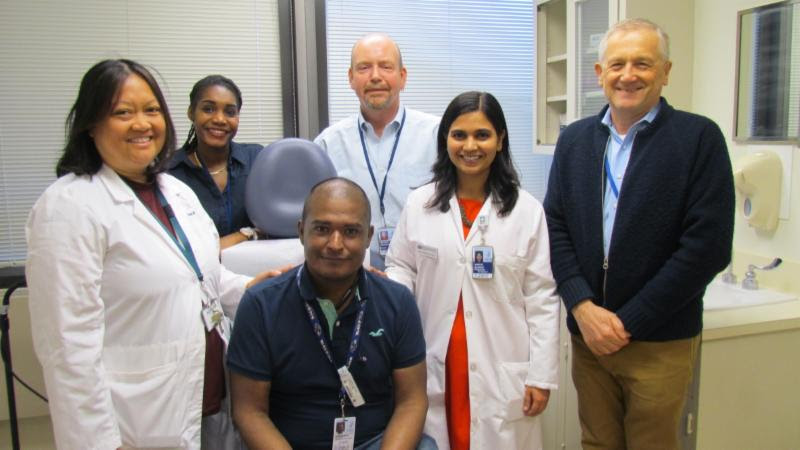
Servando, and his medical team, including Dr. Steven Pavletic, (far right) and Dr. Shruti Gandhy
